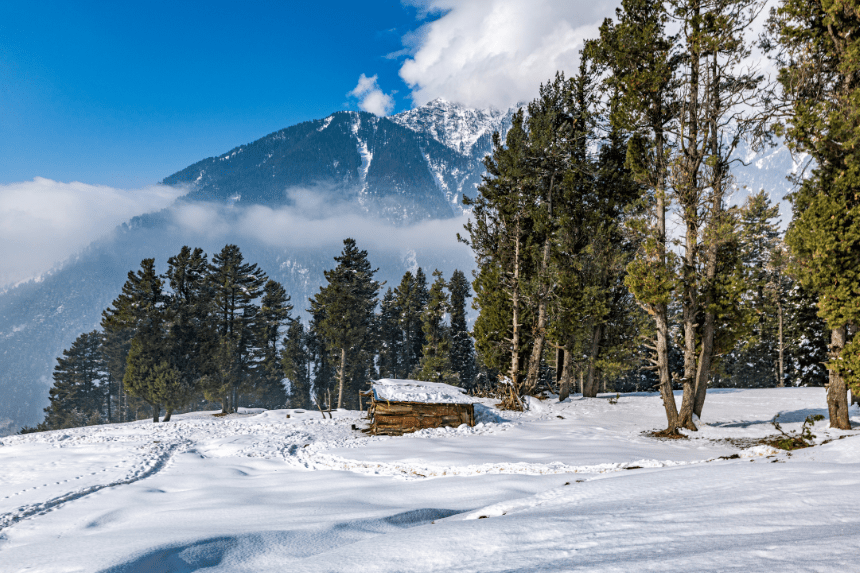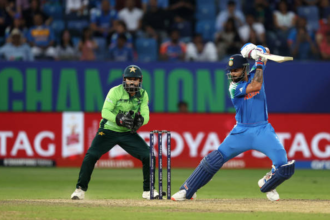One of the most urgent geopolitical issues in South Asia is the Kashmir dispute between India and Pakistan. This lovely but fragile area has seen political upheaval, wars, and innocent deaths for decades. Understanding the roots and present reality of the Kashmir conflict between India and Pakistan is essential for everyone concerned with regional stability and peace, even if both countries have strong claims over the territory.
Because of its great mountains, verdant valleys, and calm lakes, Kashmir is sometimes said to be a paradise on Earth.Behind this amazing beauty, nevertheless, comes a convoluted and intensely felt political conflict. Military presence, curfews, and border clashes still influence millions of individuals who call this area home.
Why is Kashmir disputed?
Rising in the Himalayas, Kashmir is renowned for its breathtaking natural beauty. But it has been at the core of a protracted territorial conflict since 1947. Princely states were allowed to join either India or Pakistan at the moment of their freedom from British control. Notwithstanding the majority of Muslims in Kashmir, the king decided to submit to India after tribal militias from Pakistan invaded the land.
With this choice, India and Pakistan entered their first conflict. Although the United Nations suggested a plebiscite letting Kashmiris choose their destiny, both sides have never been satisfied with demilitarisation requirements. As a result, the ceasefire line separating the area in 1949 became today’s Line of Control. Ever since, this line has stayed divisive.
This contested position has over the years driven political unrest, extremism, and violence. Different foreign players have voiced worries about the humanitarian consequences and pushed both countries toward a peaceful answer. Still, every diplomatic effort has come short in generating long-lasting transformation.
There have been how many wars have been fought?
Three main wars—in 1947, 1965, and 1999—have resulted from the Kashmir dispute between India and Pakistan. Though the Kargil battle in 1999 had a limited scale, it was noteworthy as both nations had nuclear weapons by then. These arguments have ingrained great mistrust among the neighbors.
Apart from the thousands of deaths, the conflicts have had long-lasting effects on society and the economy. Every military escalation postpones any possibility for peaceful communication. The area stays among the most militarised zones in the world even in peacetime.
Moreover, regular disturbance of daily life for people living close to the Line of Control comes from border skirmishes and violations of peace. Often, in the line of fire and generating great anxiety and trauma are houses, businesses, and schools.
The Internal Sentiment in Kashmir
The local people still have different goals in mind. While some Kashmiris advocate joining Pakistan, many others want freedom. Religion counts since Jammu and Kashmir is the only area in India with a majority of Muslims. An armed insurgency has questioned Indian rule since 1989. Tens of thousands of people have died; often caught in the crossfire are civilians.
India accuses Pakistan of backing extremist groups active in its territory. In turn, Pakistan dismisses these claims and charges India of stifling Kashmiri speech. These conflicting stories still impact how the conflict is seen both domestically and abroad.
Human rights groups have repeatedly underlined violations from both sides. Civilians deal with problems including limited access to fundamental services, arbitrary arrests, and limited mobility. Particularly among the young people who feel demoralized by decades of upheaval, mental health issues are also becoming more common. Read another article on Kashmir Attack Escalates Tensions
What changed in 2019?
2019 saw a major change as India took Article 370 of its Constitution off line. This action denied Jammu and Kashmir their semi-autonomous status. Later on it included curfews, more troops, and a communications blackout. Political tensions rose even while extremist attacks dropped and tourism momentarily surged.
Advocates of the revocation contend it promotes further development and integration. Critics, on the other hand, see it as a unilateral action compromising Kashmiri autonomy and aggravating current resentment. The political scene of the area has changed dramatically as well as its governmental framework.
New land and residential rules implemented in the area starting in 2019 have among the residents. These legislative changes have caused worries about demographic changes and cultural degradation. Many believe these actions seek to permanently change the nature of the area.
Why Have Tensions Rising Again?
Twenty-six visitors were killed in an April 2025 jihadist strike close to Pahalgam. Among civilian attacks in twenty years, it was the worst. India answered with missile strikes on sites all around the Line of Control, including portions of Kashmir under Pakistan administration. Once more, drawing attention worldwide is this cycle of violence that has brought the Kashmir dispute between India and Pakistan.
Between the two countries, counter-retaliation and reprisals help to keep the region on the brink. The presence of nuclear weapons just heightens the seriousness of the matter. Such events spread fast and cause global alarm as well as requests for world leaders to exercise moderation.
Is harmony feasible?
Even with a ceasefire deal in 2003, enduring peace has eluded us. There were brief moments of diplomacy, such as when Indian Prime Minister Narendra Modi welcomed Pakistan’s then-leader Nawaz Sharif to his inauguration in 2014. However, additional strikes on Indian soil undermined any momentum toward lasting discussion.
Following well-publicized incidents at Pulwama (2019) and Uri (2016), tensions grew. The military reactions of India signalled a fresh period of assertiveness. Every event drives the area toward possible escalation, why the need for international intervention is ever more important.
Still, peace is not impossible. Underlying all of this is track II diplomacy, back-channel negotiations, and person-to- person activities. On both sides, civil society organizations have voiced a want for understanding and peacemaking.
Currently, what can be done?
Peacebuilding initiatives ought to be given top priority worldwide. India and Pakistan have to open diplomatic lines once more. Long-term stability can be built from supporting cross-border trade, more person-to-person interaction, and guarantees of human rights in Kashmir.
Meaningful action can result from increased knowledge and informed participation. “We are tired of war and slogans,” one elderly Kashmiri person said. We reed peace with dignity.
Security and prosperity of the whole South Asian area depend on the Kashmir dispute between India and Pakistan being resolved. Creating trust, encouraging communication, and giving human life first priority will help to define the road ahead.
Policymakers have to interact with local voices and take grassroots demands into account if we are to approach resolution. Infrastructure investment, education, and development may give next generations hope. The cycle of violence most certainly will continue without these initiatives.








